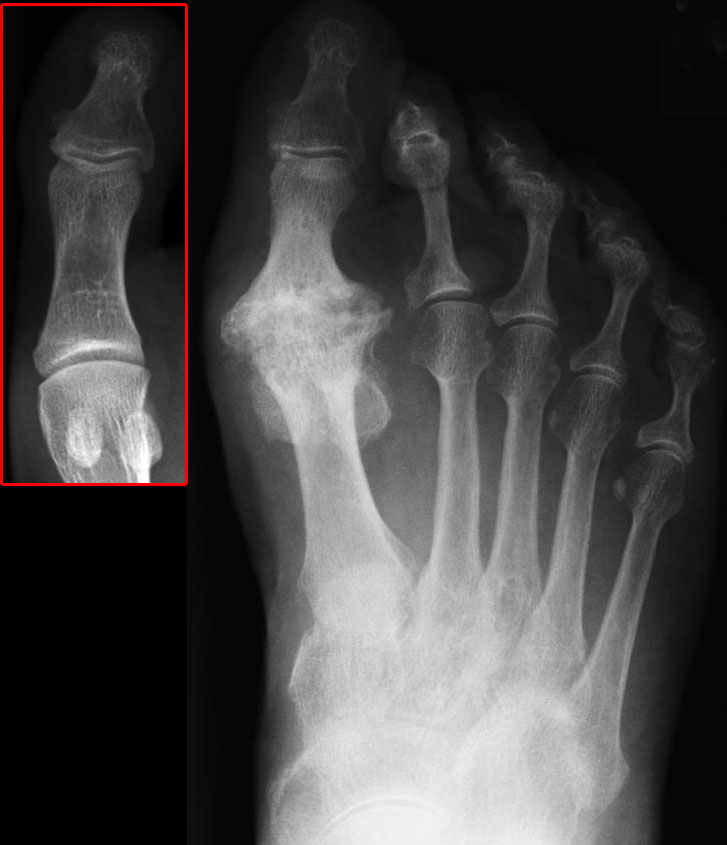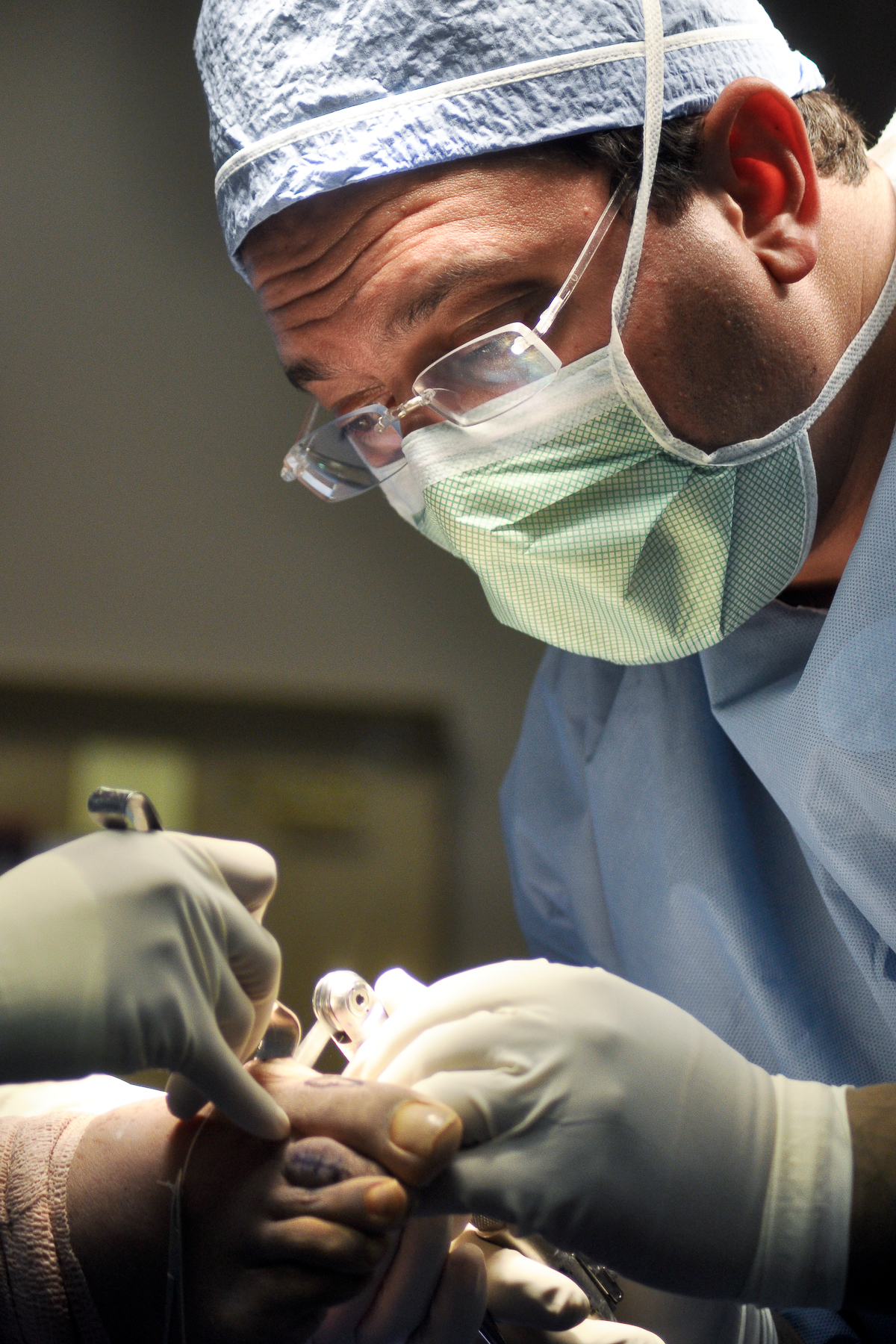|
Hallux Rigidus
Hallux rigidus or stiff big toe is Osteoarthritis, degenerative arthritis and stiffness due to Osteophyte, bone spurs that affects the metatarsophalangeal joints (MTP) at the base of the hallux (big toe). Hallux flexus was initially described by Davies-Colley in 1887 as a plantar flexed posture of phalanx relative to the metatarsal head. About the same time, Cotterill first used the term ''hallux rigidus''. Signs and symptoms * Pain and stiffness in the joint at the base of the big toe during use (walking, standing, bending, etc.) * Difficulty with certain activities (running, squatting) * Swelling and inflammation around the joint Although the condition is degenerative, it can occur in patients who are relatively young, particularly active sports people who have at some time suffered Injury, trauma to the joint (turf toe). A notable example is NBA star Shaquille O'Neal who returned to basketball after surgery. Causes This condition, which occurs in adolescents and adults, ... [...More Info...] [...Related Items...] OR: [Wikipedia] [Google] [Baidu] |
Rheumatology
Rheumatology (Greek ''ῥεῦμα'', ''rheûma'', flowing current) is a branch of medicine devoted to the diagnosis and management of disorders whose common feature is inflammation in the bones, muscles, joints, and internal organs. Rheumatology covers more than 100 different complex diseases, collectively known as rheumatic diseases, which includes many forms of arthritis as well as lupus and Sjögren's syndrome. Doctors who have undergone formal training in rheumatology are called rheumatologists. Many of these diseases are now known to be disorders of the immune system, and rheumatology has significant overlap with immunology, the branch of medicine that studies the immune system. Rheumatologist A rheumatologist is a physician who specializes in the field of medical sub-specialty called rheumatology. A rheumatologist holds a board certification after specialized training. In the United States, training in this field requires four years undergraduate school, four year ... [...More Info...] [...Related Items...] OR: [Wikipedia] [Google] [Baidu] |
Podiatry
Podiatry () or podiatric medicine () is a branch of medicine devoted to the study, diagnosis, medical and surgical treatment of disorders of the foot, ankle, and leg. A Doctor of Podiatric Medicine (DPM), or a podiatrist, is a healthcare professional who diagnoses and treats conditions affecting the structures of the foot, ankle, and leg. The US podiatric medical school curriculum includes lower extremity anatomy, general human anatomy, physiology, general medicine, physical assessment, biochemistry, neurobiology, pathophysiology, genetics and embryology, microbiology, histology, pharmacology, women's health, physical rehabilitation, sports medicine, research, ethics and jurisprudence, biomechanics, general principles of orthopedic surgery, and foot and ankle surgery. Podiatry is a high-paying specialization and was listed by ''Forbes'' in 2007 as the 15th-best-paid profession in the United States. The median annual salary of a podiatrist in the US was $124,830 in 2016 acc ... [...More Info...] [...Related Items...] OR: [Wikipedia] [Google] [Baidu] |
Osteoarthritis
Osteoarthritis (OA) is a type of degenerative joint disease that results from breakdown of joint cartilage and underlying bone which affects 1 in 7 adults in the United States. It is believed to be the fourth leading cause of disability in the world. The most common symptoms are joint pain and stiffness. Usually the symptoms progress slowly over years. Initially they may occur only after exercise but can become constant over time. Other symptoms may include joint swelling, decreased range of motion, and, when the back is affected, weakness or numbness of the arms and legs. The most commonly involved joints are the two near the ends of the fingers and the joint at the base of the thumbs; the knee and hip joints; and the joints of the neck and lower back. Joints on one side of the body are often more affected than those on the other. The symptoms can interfere with work and normal daily activities. Unlike some other types of arthritis, only the joints, not internal organs, are af ... [...More Info...] [...Related Items...] OR: [Wikipedia] [Google] [Baidu] |
Osteophyte
Osteophytes are exostoses (bony projections) that form along joint margins. They should not be confused with enthesophytes, which are bony projections that form at the attachment of a tendon or ligament. Osteophytes are not always distinguished from exostoses in any definite way, although in many cases there are a number of differences. Osteophytes are typically intra-articular (within the joint capsule). Cause A range of bone-formation processes are associated with aging, degeneration, mechanical instability, and disease (such as diffuse idiopathic skeletal hyperostosis). Osteophyte formation has classically been related to sequential and consequential changes in such processes. Often osteophytes form in osteoarthritic joints as a result of damage and wear from inflammation. Calcification and new bone formation can also occur in response to mechanical damage in joints. Pathophysiology Osteophytes form because of the increase in a damaged joint's surface area. This is most co ... [...More Info...] [...Related Items...] OR: [Wikipedia] [Google] [Baidu] |




